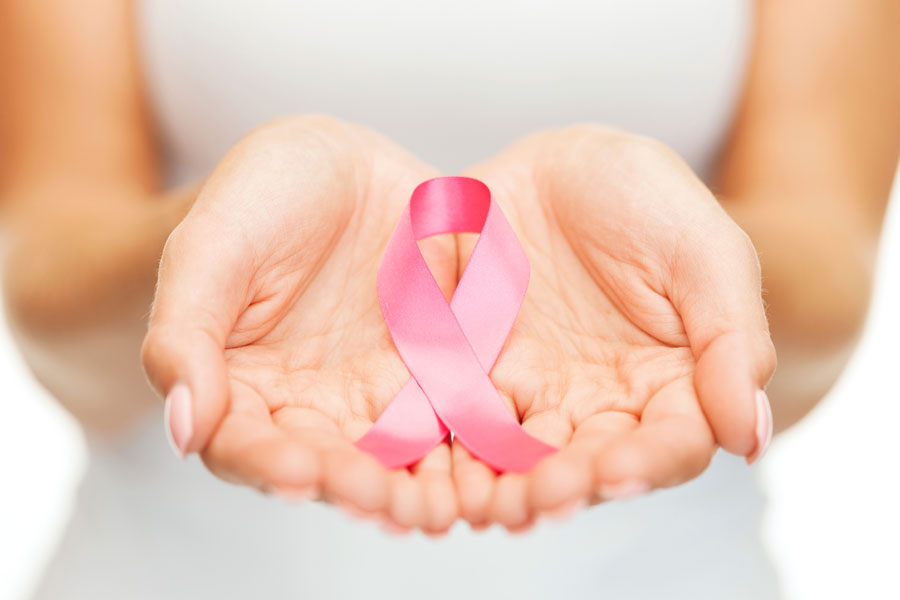
Health and wellness October 10, 2022 By
October is National Breast Cancer Awareness Month. As we honor this annual campaign and its effort to increase awareness of the disease, we want to draw attention to its message of prevention and early detection.
Reduce Your Risk
According the American Cancer Society, most breast cancers are not related to genes or family history. In fact, only five to 10 percent of all breast cancers diagnosed in the US are thought to be hereditary. This fact underscores the importance of treating breast cancer before it spreads and choosing an overall healthy lifestyle. Living at a healthy weight, limiting alcohol, getting regular exercise, and choosing healthy foods can reduce your risk of all types of cancer.
Male Breast Cancer
Men and women are both born with breast cells and tissue. Even though male breast cancer is very rare, a man’s breast cells and tissue can still develop cancer. According to breastcancer.org less than 1 percent of all breast cancers occur in men, and only one in a thousand men will ever be diagnosed with breast cancer.
Your Best Hope: Screening and Early Detection
Breast cancer screening is important for all women. According to Komen.org, screening tests are used to find breast cancer before it causes any warning signs or symptoms. This is when the chances of survival are highest. If you are at higher risk for developing breast cancer, you may need to be screened earlier and more often than women at average risk. Breast cancer screening is only recommended for some men at very high risk due to an inherited gene mutation or a strong family history of breast cancer.
- Well Woman Exam – visit your doctor annually. A breast exam is also an important part of your annual well woman appointment with your doctor or gynecologist, and the good news is that since this is preventive healthcare, it is covered by your insurance. If you do not have health insurance, you may be eligible for free services at a women’s health clinic.
- Self-Examination – conduct a self-examination monthly. You are the one who knows your body best, and you may be the first to notice changes like these. Examine your breasts monthly and mark your calendar or choose a date you’ll remember, such as the first of the month or during your menstrual cycle.
- Mammogram – recommended annually for ages 45-54 (optional for age 40-44, recommended every two years for ages 55 and older). A mammogram is a breast x-ray that can detect breast cancer when it’s small and before it creates a lump you can feel. Mammograms typically take about 20 minutes. Learn more.
- Genetic Testing – optional, based on family history. If you’re a man or women who has had a relative experience breast cancer, you may consider investing in genetic testing to find out if you carry an inherited gene mutation. Learn more.
If you’ve not examined your breasts within the last month or had a well-woman exam in the last year, take the challenge in the month of October to make time for this important step for your health and vitality.
For more information on breast cancer, to make a donation, or join a fundraiser, check out the following organizations:
American Cancer Society
Susan G. Komen Foundation
National Breast Cancer Foundation



